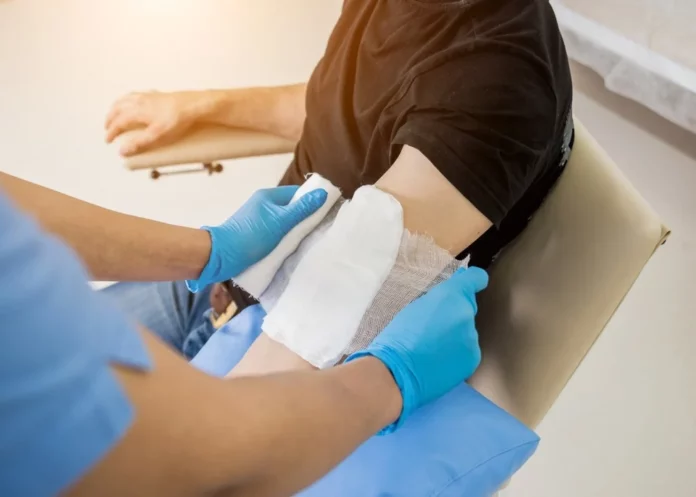The scaffold utilizes a special molecule that interacts with endothelial cells, accelerating the healing process and reducing complications
By KATIE HELLMAN — science@theaggie.org
UC Davis researchers have bioengineered a scaffold, a structure that provides support for cellular attachment and tissue development, to accelerate the healing time of deep burn wounds.
“Since large deep burn wounds often lack the adequate amount of perfused soft tissue to sustain a skin autograft, it requires a greater metabolic effort and more time to develop an appropriate wound bed for autografting,” the study, published in PubMed, reads. “These contribute to the overall morbidity of large surface area deep burns, which includes insensible fluid and heat losses, increased metabolic demand, increased risk of infection, and overall increased risk of poor scar formation.”
The scaffold can reduce the severity of these issues by encouraging the formation of new blood vessels and by reducing the need for skin grafting, which involves the transplantation of skin onto the burned area. The scaffold uses a molecule called LXW7 that interacts with endothelial cells, which are found in the skin and promote the formation of blood vessels during the healing process.
Aijun Wang, author of the study and co-director of the Center for Surgical Bioengineering, commented on the purpose of the molecule in an interview with UC Davis Health.
“At UC Davis, we developed the LXW7 molecule that can specifically interact with endothelial cells and help in their attachment, migration and survival,” Wang said. “Commonly used scaffolds lack specific binding sites to endothelial cells. When LXW7 molecules are added to scaffolds, they provide a gripping site for endothelial cells to bind, which allows for better interaction between the cells and their supportive structure known as extracellular matrix.”
Vanessa Dartora, a co-author of the study, explained the implications the new scaffold might have on the future treatment of burn wounds.
“This scaffold represents a significant advancement in burn wound treatment,” Dartora said via email. “Its ability to promote faster and more efficient wound healing, along with improved vascularization and collagen deposition, suggests potential reductions in morbidity associated with open burn wounds. It could reduce the need for autografting, especially in patients with limited harvestable skin areas.”
When mice were treated with the scaffold during the study, their burn wounds healed faster and complications were reduced. These findings are significant because, depending on the severity of the burn, complications like infection, fluid loss and a painful skin-tightening condition called a contracture can arise. With revascularization that rebuilds the damaged blood vessel networks, oxygen flow can promote tissue regeneration crucial for the healing of these wounds.
To find out the best type of scaffold for angiogenesis, or the formation of new blood vessels, burn wounds in mice were treated with collagen scaffolds, collagen scaffolds with endothelial cells, collagen scaffolds with a collagen-binding peptide bound to dermatan sulfate and the LXW7 molecule and a collagen scaffold with the same molecule in addition to endothelial cells.
Wound healing consists of the homeostasis, inflammation, proliferation and remodeling phases; the scaffold that used the combined molecule with endothelial cells was found to promote wound healing more efficiently in the proliferation phase.
Written by: Katie Hellman — science@theaggie.org




